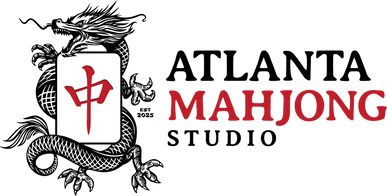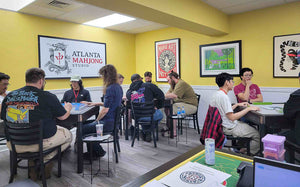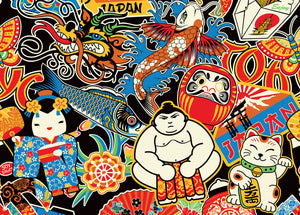Why We Don’t Offer American Mahjong (and What We Do Instead)
So you’ve heard about mahjong and you’re eager to play at our studio — fantastic! But then you ask if we play American mahjong (the version with jokers and a yearly card of hands), and we sheepishly say, “Sorry, not here.” Why don’t we offer American-style mahjong? Are we just being snobby? Definitely not. Here’s the real reason — with a little humor and a lot of love.
Sticking to What We Know
Think of mahjong like a language with many dialects. American mahjong is basically a whole different dialect from the Asian styles we specialize in. It’s not that we have anything against it — it’s a beloved game in its own right — but running a mahjong studio means picking a lane. We chose the Asian versions that Mrs. K and our community know best.
A Few Key Reasons:
-
Different rules & equipment. American mahjong uses 152 tiles (with jokers), a scoring card that changes every year, and even a pre-game tile-passing ritual called the Charleston. Our styles — like Hong Kong and Riichi — use a simpler, consistent 144-tile set. Stocking and teaching both would make our heads explode.
-
Learning curve overload. Each mahjong variant is its own rabbit hole. American and Asian styles don’t really overlap, and supporting every version well just isn’t realistic for a small studio. We’d rather do a few things really well.
- Community & passion. Mrs. K, who co-founded the studio, grew up playing Asian-style mahjong — especially Filipino style with her grandmother. She wanted a consistent, welcoming place for others who play these styles. That’s how the studio started.
What We Do Offer Instead
Just because we don’t run American-style games doesn’t mean you’re missing out. Here are the three main styles we play at the studio:
Riichi (Japanese Mahjong)
Complexity: High | Vibe: Strategic, competitive, very anime-friendly
For the serious players (or the seriously curious). Riichi adds bonus tiles, betting mechanics, and a scoring system you might need a spreadsheet for. But it’s a rush — high-stakes, high-reward, and extremely satisfying once it clicks.
Hong Kong Old Style
Complexity: Low | Vibe: Social, fast, easy to learn
This is our house style — the one we teach and play most often. It’s great for beginners, fun with friends, and a perfect way to learn the game without needing a flowchart. If you’ve never played before, start here.
Filipino Mahjong
Complexity: Medium | Vibe: Nostalgic, homey, full of heart
This is the version Mrs. K grew up playing. It’s simple, fast, and full of little touches that make it special — including an extra tile or two in hand and some good-natured table superstitions. You don’t have to be Filipino to enjoy it, but you might feel like part of the family once you start playing.
Isn’t One Style Better Than the Others?
Nope. That’s like asking whether tacos are better than sushi. Different ingredients, different flavor, same amount of joy. Every version of mahjong has depth — whether it’s American-style with its ever-changing scorecard or Riichi with its silent intensity and betting tiles. We simply chose the styles we know and love best.
We admire American mahjong players and are always happy to connect folks with groups in Atlanta who play it. Some of our players even started with American rules before discovering the Asian styles — and we love seeing that kind of crossover.
Why We Focus on Asian Styles
Before the studio, players like Mrs. K had to chase down games — one weekend in Cobb County, the next in a mall food court in Gwinnett, often with no location confirmed until the last minute. She wanted a quiet, consistent, friendly place to play the styles she grew up with. So she signed a lease. And filled out a mountain of paperwork. And accidentally started a business.
Now we’re here — a fixed home for players of Asian-style mahjong in Atlanta. We’ve got tables, tiles, and plenty of people who love the game as much as you do.
Curious? Come Play.
If you’re an American mahjong player and want to try something new — we’d love to have you. If you’re brand new to mahjong entirely — even better. And if you’ve been playing Filipino, Riichi, or Hong Kong style for years and just want a consistent place to play? That’s why we exist.
Reserve a seat. Grab a table. Try a new style.
We’ll help you find your way.






